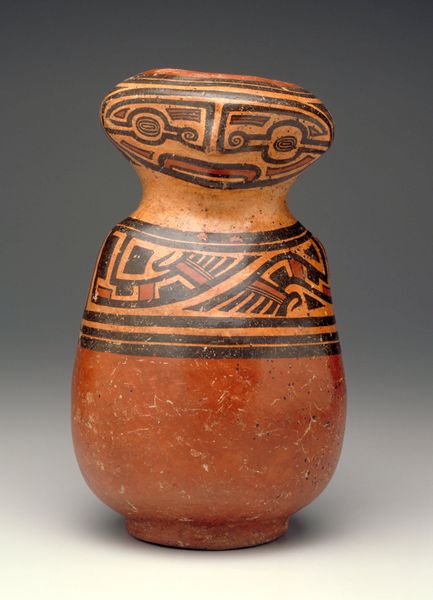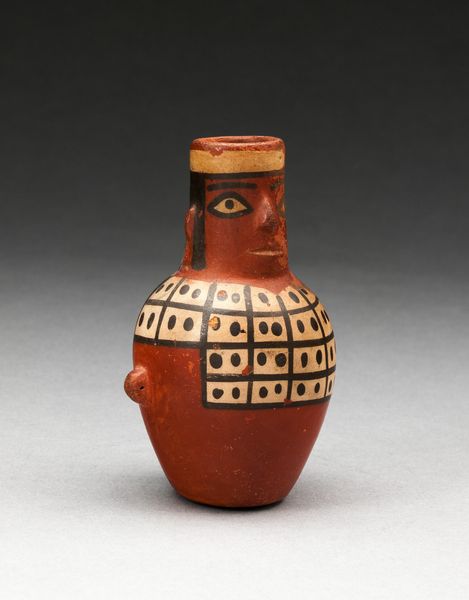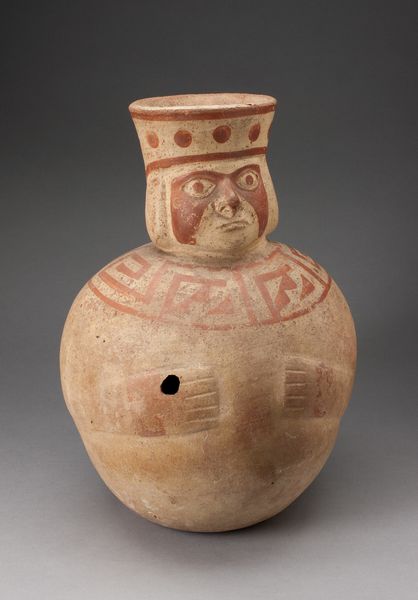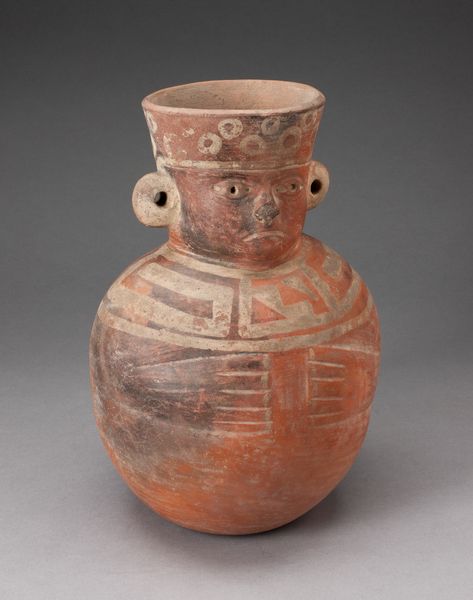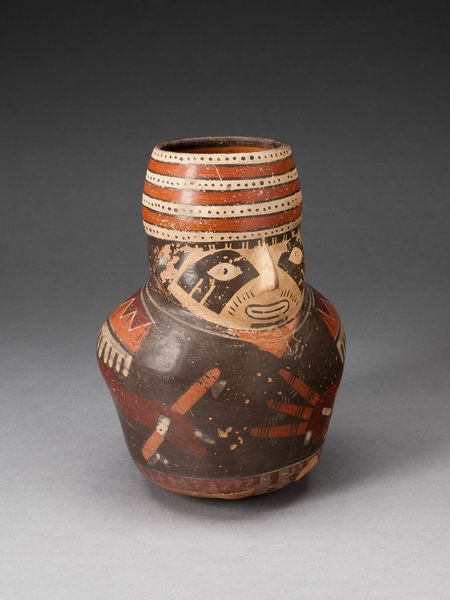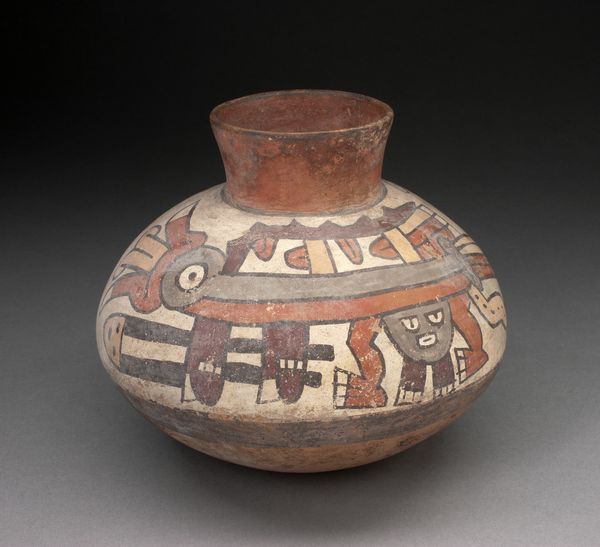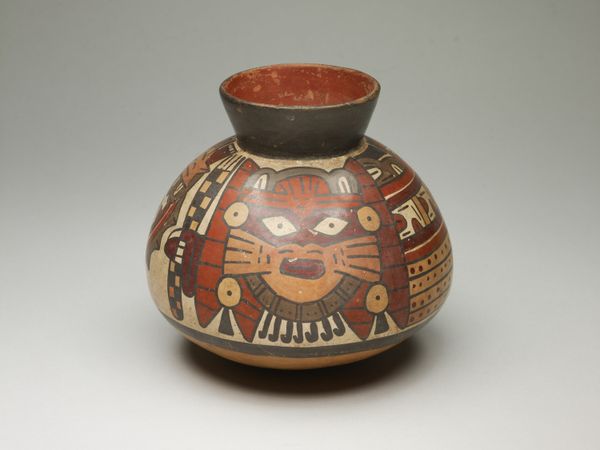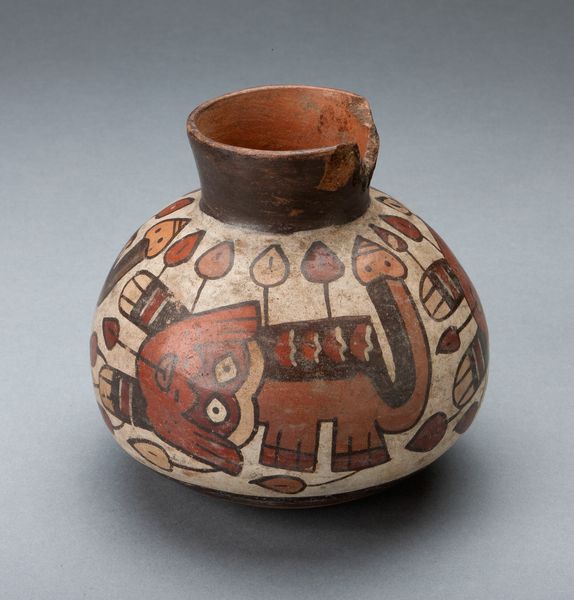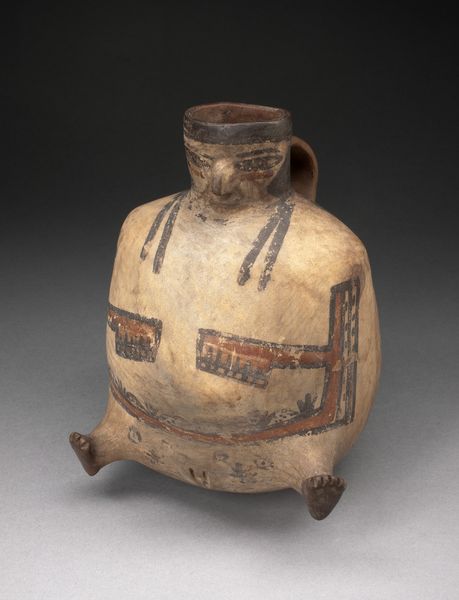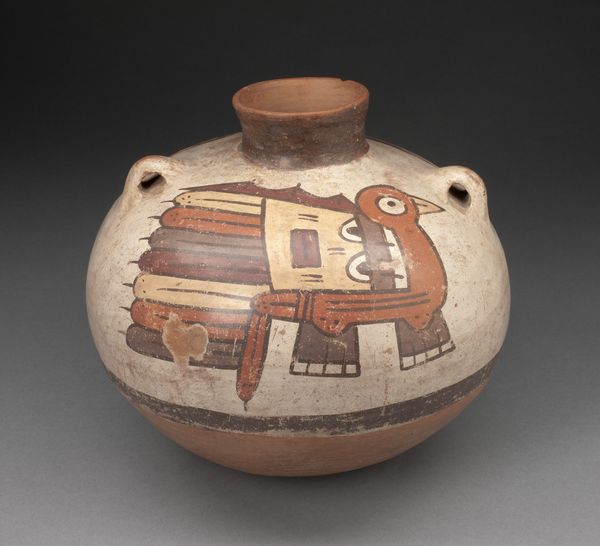
ceramic, earthenware
#
portrait
#
ceramic
#
figuration
#
earthenware
#
geometric
#
earthenware
#
indigenous-americas
Dimensions: 7 1/4 x 6 3/4 x 5 1/2 in. (18.4 x 17.15 x 13.97 cm)
Copyright: Public Domain
Curator: Allow me to draw your attention to this intriguing Polychrome Jar, crafted by the Tiwanaku culture sometime between the 13th and 15th centuries. Editor: Woah. Okay, first impression? This thing feels… heavy with secrets. Like it's seen some stuff, you know? And that face—it's staring right through me. Gives me a little shiver, actually. Curator: Indeed. Note how the anthropomorphic figure is integrated into the jar’s overall form. The head functions as the neck, the body widens into the vessel itself. Examine, too, the intricate geometric designs—a sophisticated visual language we're only beginning to decipher. Editor: Right? That geometric stuff feels very deliberate. Almost like it's a map… or a spell? And the creature-shapes integrated in the design seem to want to speak, to me; perhaps they're totems—or the ancestor's spirit animals. I wonder about the artisan who made this. Did they chant, drum, or pray to those very spirits, when creating? I sense their intentions and awe now as much as any viewer from centuries past might. Curator: We observe several levels of sophistication here: The interplay of form and surface design—observe the meticulous balance between figurative representation and abstract patterning. It exemplifies sophisticated artistry within the ancient Andean traditions. Editor: It's so cool, imagining its purpose back then! This wasn't just a pretty thing. This thing carried water or, or maybe even something sacred. The mouth seems closed, firm… containing! Like its guarding a mystery! Curator: It’s an excellent encapsulation of their worldview; form and function intertwined. The artists' conceptual frameworks and semiotic sophistication becomes clear through our visual deconstruction. Editor: Well, thanks to this pot’s closed lips, there’s space enough in its mystery for each of us to imagine what it holds or may have held for millennia to come! Curator: Precisely. Its beauty, then, transcends simple aesthetics. It speaks to the ingenuity and profound cultural intelligence encoded within this enduring art form.
Comments
No comments
Be the first to comment and join the conversation on the ultimate creative platform.
